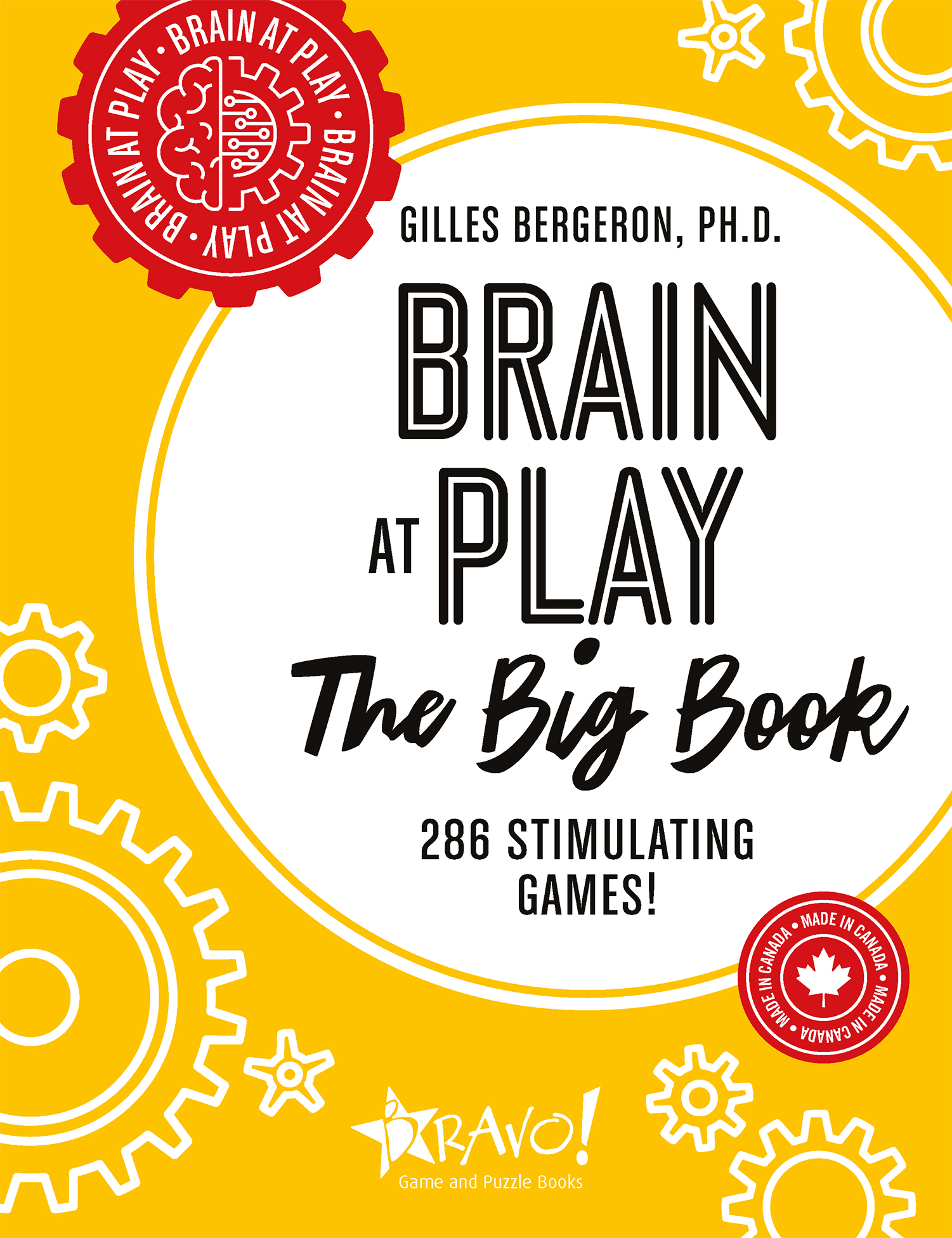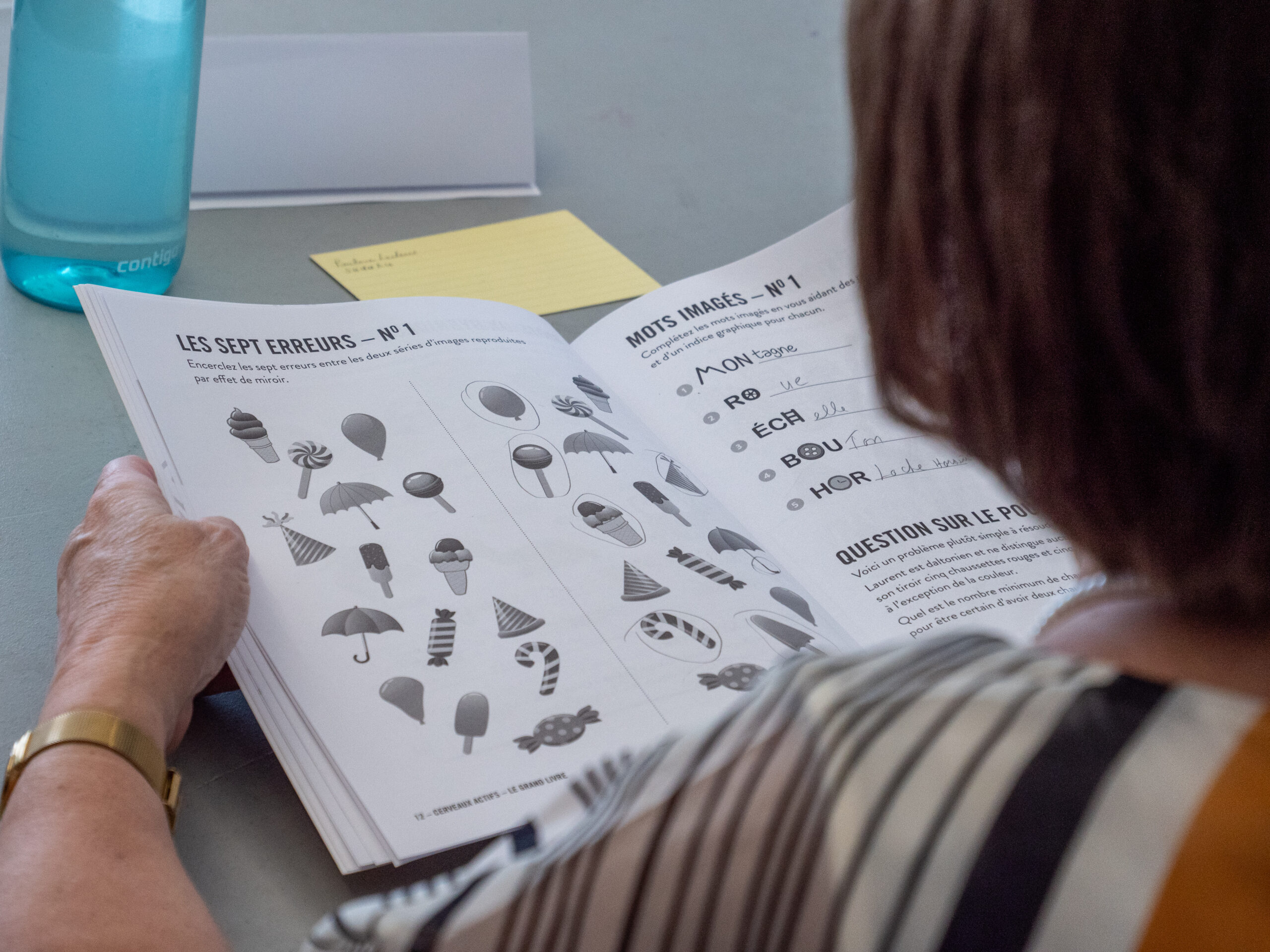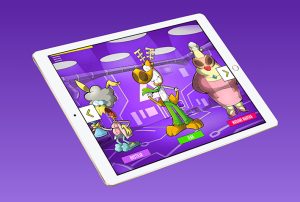
 Brain at Play — The Big Book is published by Canadian publisher Bravo! Game and Puzzle Books. This brand new, stimulating, fun concept for maintaining brain function was created by Gilles Bergeron, Ph.D., a specialist in cognitive psychology. We asked him a few questions.
Brain at Play — The Big Book is published by Canadian publisher Bravo! Game and Puzzle Books. This brand new, stimulating, fun concept for maintaining brain function was created by Gilles Bergeron, Ph.D., a specialist in cognitive psychology. We asked him a few questions.
Can you tell us a bit about yourself and your professional life?
Gilles Bergeron: I first did advanced training in cognitive psychology (a branch of psychology that studies mental processes, such as perception, memory, and learning), which led to teaching and applied research. But I am also a game lover. I get a great deal of satisfaction from designing and refining games of all sorts – particularly brainteasers and educational games.
Can we really stimulate our grey matter and maintain our mental faculties?
B.: There is no magical way to maintain our mental faculties or prevent cognitive loss, particularly as we grow older, but it has been repeatedly shown that keeping our brain active is a good way to keep it healthy, particularly if we have fun doing it and if we vary the kind of activities involved.
 Why did you decide to publish Brain at Play – The Big Book?
Why did you decide to publish Brain at Play – The Big Book?
B.: At first, I had put together a collection of games for a workshop, but I thought it was a shame it wasn’t available to a wider audience. I’m glad I found Bravo! and a team to help me publish the games. Knowing it would reach a lot of people encouraged me to enrich and diversify the types of games I created.
What distinguishes this book from other books of games?
B.: Definitely the variety. There are at least 40 different types of games with content that is just as diverse and that solicits a wide range of functions: observation, logic, concentration, spatial orientation, and more. There are also informational tidbits about how the brain works, that dispel myths about the brain and that address cognitive function in an easy-to-understand, vivid way. I don’t think of myself as a specialist in psychology who creates games, but rather as a game designer who is sharing his knowledge about cognitive science and who uses it to enrich the games.
What is your favourite exercise and why?
B.: It’s hard to choose just one, but I like games and exercises that get you to develop your own methods and strategies to find the solution, or that make it possible to find the solution gradually. For example, the game called Three of a Kind asks you to find, in a set of illustrations, the only one that can’t be grouped with two others to form a trio (tools, clothes, toys, etc.). It’s a relatively easy game with familiar content, but to find the solution, you need to go through a process of elimination.
Is the book for any particular age group?
B.: The games can be enjoyed by anyone from the age of 8 to 108 years old. However, if I had to define it even more, I would say it appeals to kids 8 to 12, and to adults 60 and up. I’m sure anyone who wants to train their brain will get something out of it, particularly if they like games.
 Do you have a secret or anecdote to tell us about the human brain?
Do you have a secret or anecdote to tell us about the human brain?
B.: I really like to show how the brain is subject to cognitive illusions, the way the eye is subject to visual illusions. Often, the brain has to quickly deal with a lot of information, so it takes shortcuts, which leads to mistakes. For example, complete the following sentence: “Paul’s mother has three children: Snack, Crackle and… ?” Your brain may want to answer “Pop”, but the real answer is “Paul”.
To conclude, is it true that we use only 10% of our brain?
B.: No. That’s a myth that came into being over 100 years ago and that persists despite scientific evidence to the contrary. The brain is involved in every task we perform, even the most commonplace, and the different parts of the brain are constantly active and interacting with each other. The percentage of the brain we use varies from person to person depending on what we are doing or thinking.
Brain at Play — The Big Book will be available on July 1st, 2021.


